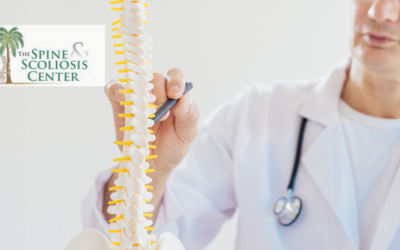Your intervertebral discs are the invisible cushions of the body; these spongy structures sit between your spinal vertebrae and absorb impact when you move to assist with spinal movement. As we age, our intervertebral discs degenerate and get worn down. This can result in symptoms like pain in the back or neck, numbness or weakness in the extremities, or pain radiating down the limbs. One treatment option for degenerating discs, such as cervical discs (which support the neck) and lumbar discs (under the neck), is to replace the worn discs with artificial ones. Read on to learn more about artificial disc replacement and if it may be the right choice for you.
Top Things To Know About Artificial Disc Replacements
- Artificial disc replacement helps you maintain spinal movement and flexibility: An artificial disc acts like your natural disc (but without the degeneration) to preserve motion in the spine. This is an essential distinction from spinal fusion, which is also used to treat degenerative disc disease. While artificial disc replacement replaces the old disc, spinal fusion literally fuses the two vertebrae together and eliminates movement between the two vertebrae. While stopping movement may be recommended for certain cases, artificial disc replacement may be more beneficial for others.
- Artificial disc replacement can be a proactive treatment for adjacent segment disease: Adjacent segment disease is a complication from spinal fusion surgery resulting in degeneration in the parts of the spine above and below the area of surgery. Doctors hypothesize that when motion is prevented between two vertebrae, the “load” of motion is taken on by the adjacent segments of the spine, which results in a higher likelihood of developing their own complications. Since artificial disc replacement allows for more movement, adjacent segment disease is less likely to happen.
- Artificial disc replacement can be a minimally invasive spine surgery done in an outpatient setting: Spine surgeries in the past typically involved large incisions and extended hospital stays. Thanks to technological advancements, more spine surgeries- such as artificial disc replacement- can be performed in an outpatient environment with minimally invasive techniques. Smaller incisions mean less damage to surrounding muscles and tissues, resulting in decreased risk of infection, less bleeding, and a lower risk of complications.
- Artificial disc replacement involves a shorter recovery period: While mild discomfort is common following surgery, it’s typically able to be managed with pain relievers and ice. You’re probably going to be out of bed and walking around just a few hours after the procedure. Patients should rest and relax for the first week following the surgery, but should be able to drive within a week or two and return to less strenuous tasks.
Contact Us Today
A board-certified spine surgeon can help you determine if artificial disc replacement is your best treatment option. Who you choose for your medical care is key. A highly trained spine surgeon from The Spine and Scoliosis Center will address your concerns and goals for treatment, and determine which surgery is the best option after careful evaluation. Call The Spine and Scoliosis Clinic at one of our Florida locations for consultation today.




0 Comments